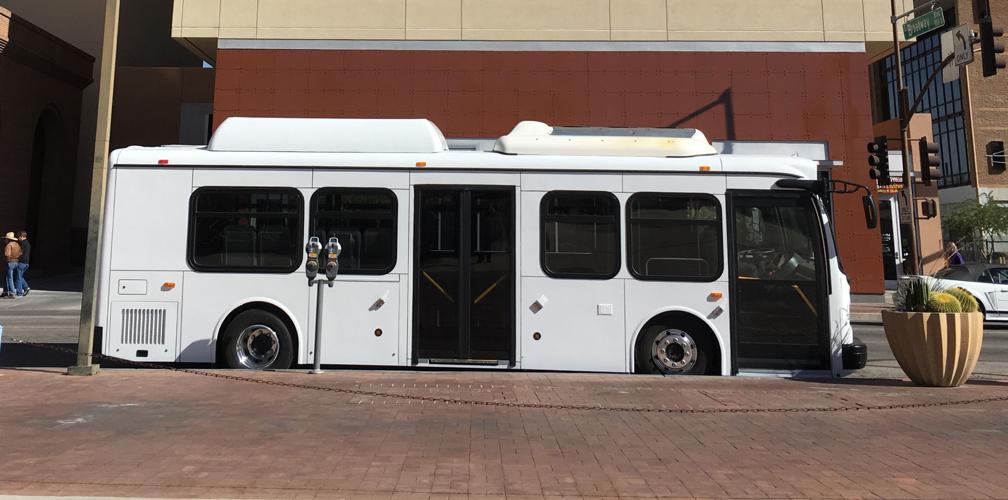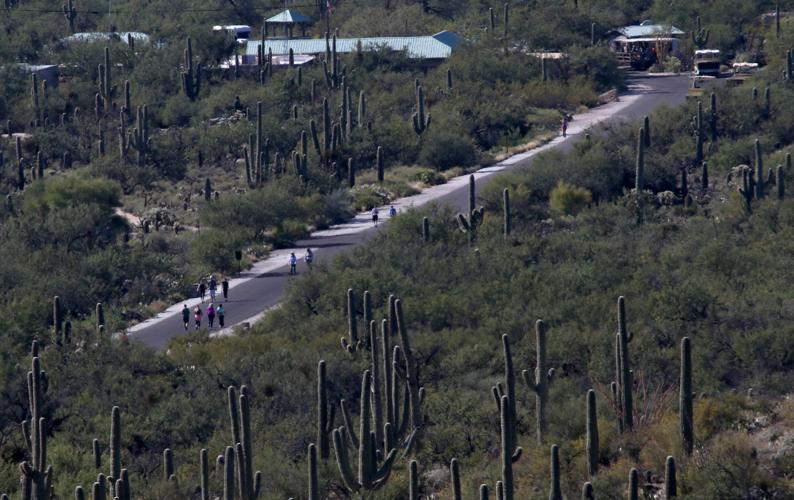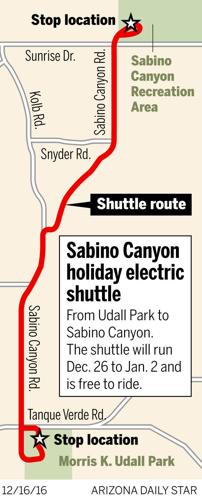Every visitor to Sabino Canyon between Christmas and New Year’s knows the drill: slowly cruise the past-capacity parking lot, scan the vehicles for reverse lights, and dart to openings before the other circling vehicles swoop in.
“We have 370 parking spaces at our parking lot, and typically those spaces are at capacity through that entire week,” said Ken Born, ranger for the Coronado National Forest’s Santa Catalina District.
But that decidedly unrelaxing holiday tradition won’t be necessary for the week after Christmas this year, thanks to a pilot shuttle service that will take would-be nature lovers from nearby Morris K. Udall Park to one of Southern Arizona’s most visited recreation destinations.
As many as 1.3 million people have visited Sabino Canyon in recent years, according to Born.
The first bus will leave Udall at 9:15 a.m., with trips on the hour, and the final bus will depart from Sabino Canyon at 4:45 p.m. every day from Dec. 26 to Jan. 2. The shuttle will be parked near the Tanque Verde Road entrance to the park across from Paseo Rancho Esperanza, according to a Pima Association of Governments spokesperson.
The electric bus, provided free by the North American subsidiary of Chinese company BYD, will ferry up to 40 passengers to and from Sabino, and do so with no fares or tailpipe emissions. If demand exceeds capacity, there will be a non-electric backup bus on standby to pick up the slack. Sun Tran routes 5, 8, 9 and 37 all have connections at Udall, making car-free trips to the recreation area possible from many parts of Tucson.
Born and representatives of PAG, which is a partner on the project, said one of the goals is to gauge interest with an eye toward eventually establishing a permanent shuttle service. Both groups have long hoped to establish a public transit route to Sabino.
PAG’s Jim DeGrood said there is no money available in the Regional Transportation Authority’s budget to do so, but that a successful pilot project would strengthen grant applications to cover the costs.
“And we think there’s a good chance to get money,” he added.
There’s also an interest in incorporating electric buses into the larger public transit system, and demonstrations like the shuttle are a good way to test the equipment out, according to DeGrood.
Beyond cutting down on emissions and parking lot congestion, DeGrood and Born said the shuttle can help improve access and visitor diversity.
“We know that there is an interest in trying to make that park accessible to people who don’t have vehicles,” DeGrood said.
Justin Scalzi, BYD’s southwest sales manager, said the demonstration model will be a 30-foot bus with a battery that gets more than 140 miles on a full charge, which takes about 3½ hours. The charging station will be at the recreation area, Born said.
Though up-front costs are higher than traditional buses, Scalzi said that over the life of the vehicle, maintenance and repair costs are substantially lower for electric buses.






